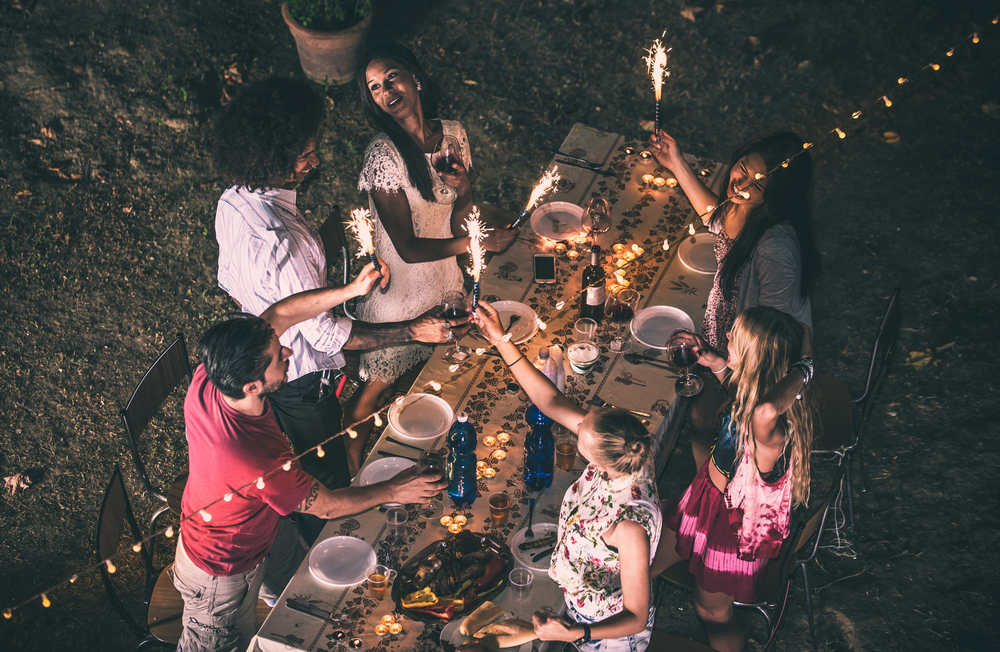
How to Host a Low Waste Summer Party
May 27th, 2021
Host a zero waste party using these 4 simple tips:
-
Reduce the waste and eliminate single-use/serve items.
-
Ditch disposables and choose reusable options as much as possible.
-
Use compostable or recyclable products when necessary.
-
Set up a waste collection system with clear labels for recyclables and compostable materials.
The key to Zero Waste – whether it be for a whole community or for your party – is to plan ahead. When we begin with the end in mind we can eliminate waste before it exists and reduce our disposable items as much as possible.
If you’re going to someone else’s gathering, bring your own reusable cutlery, cup, plate, and napkin. That will help you avoid any single-use disposable items that are being used. You may even spark a conversation or two with your reusables.
Minimize Disposables
Plates/Bowls/Cups/Cutlery
-
Stock up on enough reusables. Check out the local thrift shops for reusable plates, bowls, cutlery, etc. You can often find matching sets in great condition. If you have a dishwasher, make sure it is empty before your party so you can put a few things in at a time as you find time.
-
If you do use disposables, strive for CMA-W fiber compostable products. You can find these items at BGreen Today
Napkins
- Stock up on cloth napkins. You can find these secondhand at thrift stores or buy new at local shops.
- If you do use paper napkins, strive for unbleached and with post-consumer recycled content.
Single-serve food and drink items
-
Avoid single-use condiment packets by setting out bulk containers.
-
Avoid candy bars and other individually wrapped food items. Sweet treats and other snacks can be purchased in bulk locally!
-
Make bulk drinks in dispensers instead of getting single-use bottles and cans.
-
If you are providing single-serve drinks, strive for aluminum and glass instead of plastic.
Menu Planning
Make a menu that is written down or typed up - not in your head! This is important when you go grocery shopping so you buy only what you truly need and avoid food waste. Tip: Use an online event meal planner like the Guestimator to get to exact amount of food you need!
-
If you’re asking guests to bring a snack or dish to pass, let them know what you’re already providing and ask them to communicate with you what they plan to bring. Tip: Set up a shared online document for guests to add name and what they’re bringing.
-
Ask guests to bring a reusable to-go container to take leftovers home at the end of the party.
Decorations
Minimize disposables
-
Use decorations that can be saved and reused! You can get decor items at the local thrift shops or get crafty and make your own. There are so many ideas online for upcycling thrift store finds and making your own decorations with minimal supplies.
Only get disposables that can be composted or recycled.
- Idea #1: Sustainably produced local flowers from the farmer's market.
- Idea #2: Nature from your backyard - pick your own flowers or make confetti by hole-punching leaves.
Furnishings, Games, and More
Need extra tables, chairs, tablecloths, etc? Ask your local friends and family if you can BORROW before you go buy it for yourself. Put their items sitting in the basement to use instead of getting your own. Do the same for yard games, indoor games, and anything else you might need before you go buy new.
Avoid disposable tablecloths - especially plastic ones.
Waste Collection Station Considerations
-
Set up an easily identifiable and clearly labeled waste collection system for returnables, recyclables, compostables, and trash. Check out our Zero Waste Station signs for examples.
-
Talk with your guests about your zero waste efforts and explain what goes where so you don’t rely solely on your waste collection system signage.
-
Monitor your collection system throughout the event to remove contamination from the recyclables and compostables.
Zero Waste is about more than just recycling and composting. It's a cyclical system that mimics the way resources flow in nature. It considers the entire life cycle of products to minimize waste from the beginning, and focuses on designing products that can be reused and recycled.